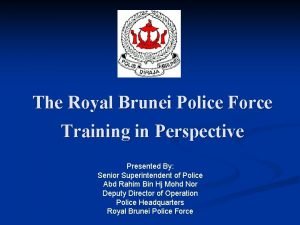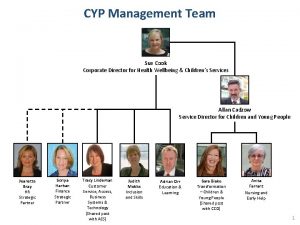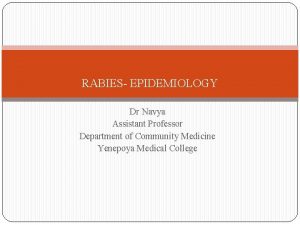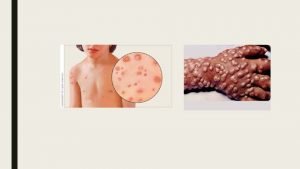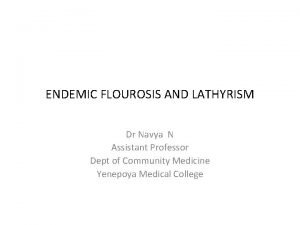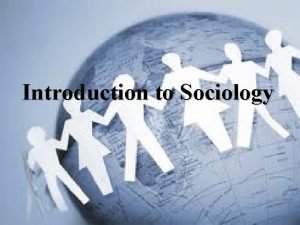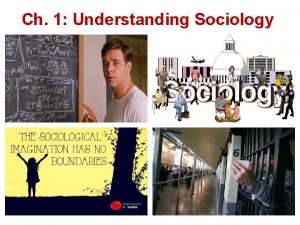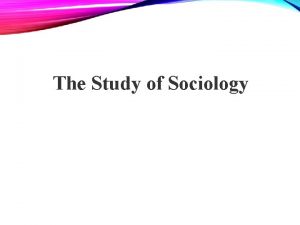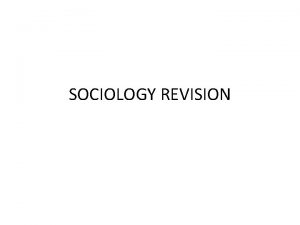SOCIOLOGY IN MEDICINE Dr Navya N Assistant Professor





























- Slides: 29


SOCIOLOGY IN MEDICINE Dr Navya N Assistant Professor Department of Community Medicine

SPECIFIC LEARNING OBJECTIVES Define the terms related to medical sociology Describe the role of sociology in health

SOCIOLOGY Study of human relationships and of human behavior Concerned with the effects on the individual of the ways in which other individuals think and act Medical sociology: the study of cultural factors and social relations in relation to illness

Need for study of sociology 1. Understanding the health problem : Ex. PEM 2. Understanding the individual behaviour: Health behaviour, Sickness behaviour, Treatment behaviour 3. Understanding group behaviour: Ex. Utilisation of health services 4. Making choices of intervention: Acceptable to the beneficiaries 5. Sociological methods: Knowledge, attitude and Practice (KAP) study

SOCIETY Group of people settle down and organize System of laws and customs Public health is a part


COMMUNITY Social group determined by geographical boundaries and/or common interests Its members know and interact with each other. It functions within a particular social structure and exhibits and creates certain norms, values, and social institutions. The individual belongs to the broader society through his family and community

CHARACTERISTICS OF A COMMUNITY The community is a contiguous geographic area Composed of people living together People co-operate to satisfy their basic needs There are common organizations : Eg : markets, schools, stores etc


SOCIAL STRUCTURE Social structure refers to the pattern of inter-relations between persons A complex of major institutions, groups, power structure and status hierarchy


SOCIAL INSTITUTIONS A social institution-organized complex pattern of behaviour in which a number of persons participate in order to further group interest. The family, the school, the church, the club, the hospital, political parties, professional associations and the panchayats are all social institutions. Within each institution- rights and duties of the members- defined.


SOCIAL ROLE Individuals are allocated roles as people in a drama Given or acquired When a person falls ill, he assumes “sick role” – expected to decrease or relinquish – normal duties, seek medical aid, carry out orders given by the physician


SOCIALISM Any economic doctrine- favours the use of property and resources of the country for the public welfare Social ownership ’All for all' and 'each for all’

SOCIALIZATION Process by which an individual gradually acquires culture and becomes a member of a social group Eg : Children going to school Internship – doctors – opportunity to learn how to become acceptable to public at large as doctors


SOCIAL CONTROL MECHANISM Formal – laws and acts Informal – social pressure exerted by powerful groups, individuals, friends

CULTURE Learned behavior which has been socially acquired Has a profound influence on health and disease Eg : developed countries – cancer lung from smoking India – chewing pan – oral cancer Cultural practices – personal hygiene, nutrition, immunization, family planning, child rearing etc

ACCULTURATION “Culture contact“ Contact between two people – different types of culture – diffusion of culture – both ways Various ways : v Trade v Industrialization, v Religion, v Education, v Conquest v Eg : introduction of scientific medicine- India – culture contact


SOCIAL CLASS Social class is closely bound up with 1. Economic status, 2. Level of education, 3. Way of life, 4. Attitudes and expectations, 5. Exposure to different types and degree of stress. Direct bearing on the external resources and internal mechanisms available to individuals in attempting to deal with health problems


SOCIAL CLASS Social class linked- Incidence of disease. Income, occupation and education which- major componentseach generally positively correlated with health status. Diseases- shown to affect people at various social levels differently. Eg : coronary heart disease, hypertension. Diabetes- high incidence in social class I and a gradual decline Dlseases of skin, eye and ears, diarrhoea and dysentery have also shown a higher incidence in the lower classes- poor state of physical environment in which they live. Social class differences- mental illness Infant mortality, general mortality, maternal mortality- related to social class.

SOCIAL PROBLEMS Poverty, crime and disease – common social problems Many public health problems are social problems- drugs, alcohol

SUMMARY ? ?

THANK YOU
 Navya venkateshaiah
Navya venkateshaiah Promotion from assistant to associate professor
Promotion from assistant to associate professor Cuhk assistant professor salary
Cuhk assistant professor salary Mattie is a new sociology professor
Mattie is a new sociology professor Mon assistant visuel sncf
Mon assistant visuel sncf Ibm support assistant
Ibm support assistant Arbitre assistant robot
Arbitre assistant robot The signmaker's assistant vocabulary
The signmaker's assistant vocabulary Mauritius police force hierarchy
Mauritius police force hierarchy Home assistant fglair
Home assistant fglair Good afternoon for you
Good afternoon for you Smita had been working as an assistant manager
Smita had been working as an assistant manager Assistant techer
Assistant techer Starlight assistant
Starlight assistant Cyp assistant director
Cyp assistant director Printing and dyeing assistant
Printing and dyeing assistant Ibm support assistant workbench
Ibm support assistant workbench Daq assistant express vi
Daq assistant express vi Cisco personal communications assistant
Cisco personal communications assistant Experimental design assistant
Experimental design assistant Dental assistant
Dental assistant Kpu health care assistant
Kpu health care assistant Matrox iris gt
Matrox iris gt Shop assistant good morning can i help you
Shop assistant good morning can i help you The signmaker's assistant quiz
The signmaker's assistant quiz Knx topology
Knx topology Define a routing list as it pertains to incoming calls
Define a routing list as it pertains to incoming calls Home assistant fan template
Home assistant fan template D-kefs scoring assistant
D-kefs scoring assistant Laparoscopische cholecystectomie surgery assistant
Laparoscopische cholecystectomie surgery assistant








